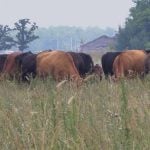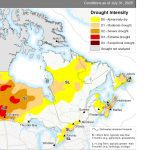A tax revolt could be brewing if rural Saskatchewan residents have to pick up a bigger share of education taxes under the new assessment system.
One rural municipality said it won’t accept the new property tax assessment figures and is sending them back. The new assessment figures, based on 1994 property values, replace outdated 1965 values that municipalities were using.
Early calculations show the southwestern Saskatchewan RM of Frontier will be billed $111,500 more this year for school taxes. And under the new assessment system, the village of Frontier will pay $85,000 less.
Read Also

Alberta eases water access for riparian restoration
Alberta government removes requirement for temporary diversion licence to water plants up to 100 cubic metres per day for smaller riparian restoration projects
“We are totally dissatisfied with the way the assessment shifts the burden for education tax to rural property,” said reeve Roy Erickson. “There certainly are no more children in rural areas than there ever was.”
Last week, after a unanimous vote of council, administrator Ray DubŽ repackaged the information and sent it back to the Saskatchewan Assessment Management Authority.
“Someone has to take a stand,” DubŽ said.
Overall, the province will undergo a $15 million shift from urban to rural municipalities in education taxes alone, said Ken Engle, managing director of the assessment group.
While each case is different, DubŽ said most farmers in the Frontier municipality will be paying an additional $60 per quarter section for schools.
Erickson said the RM wants the provincial government to do one of three things: Lower rural assessments, raise them in urban areas, or allow school divisions to levy varied mill rates.
Unlikely options
But none of the above are likely, said Ron Davis, assistant deputy minister for the Saskatchewan department of municipal affairs.
“Everyone is trying to hold on to an anchor here,” he said, “but it is not really an option to send the numbers back and just not do it.”
Davis said the government is examining the extent of the tax shift for education and encouraging all stakeholders to work together.
“We’re telling municipal and school folks if there ever was a time to co-ordinate and talk to each other, this is it,” he said.
Discussions possible
Davis didn’t close the door on the possibility of future discussions depending on the overall impact rural communities will face. “The answer is being reviewed and discussed with no answer at my fingertips.”
The RM of Frontier is not alone in wondering how rural taxpayers are going to bear the cost of rising education taxes.
In the Kamsack school division near Yorkton, Sask., there will be roughly a 20 percent shift onto the rural tax base, according to secretary treasurer Janet Patterson.
A phone survey showed with reassessment, 72 percent of the division’s 1997 budget will be drawn from the rural tax base compared to 56 percent in 1996.
The largest RM in the division, Cote, will pay an additional $70,000 in school taxes. It has a population of 708. Administrator Kim McIvor said last year’s assessment was $5.4 million but under the new system, it climbs to $29 million.
“But property owners really have no choice,” McIvor said. “It really has to come from the provincial level.”
















